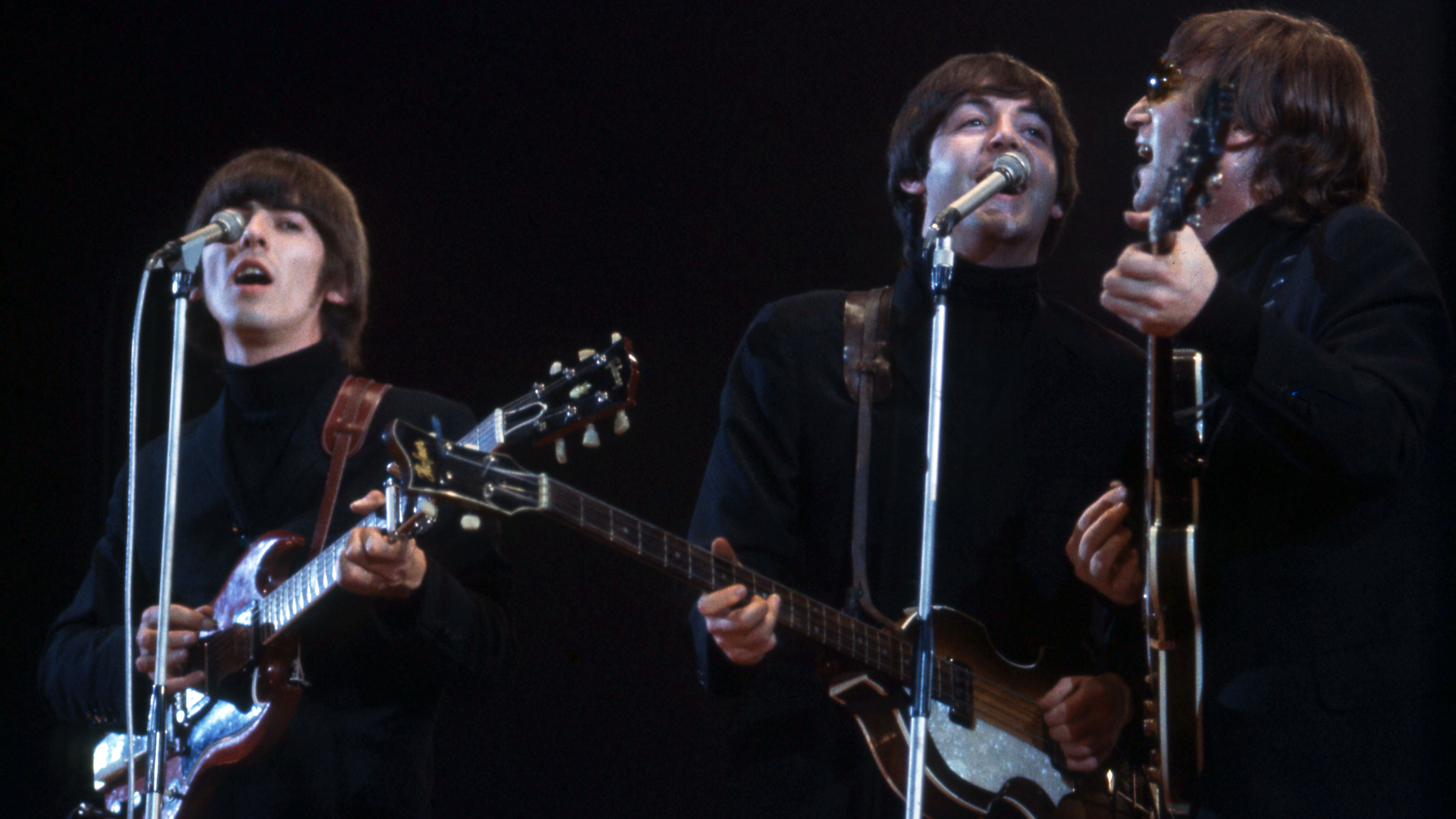
It’s hard to ignore the impact that The Beatles have had on popular music culture. From their birth in the swinging '60s and up to the present day, they have had an unparalleled influence over the last six decades of musicians.
As a band, The Fab Four covered a lot of ground. From the upbeat, strummy British guitar pop of the early '60s up to the more psychedelic offerings in the latter part of the decade, they’ve experimented with a lot of styles.
We don’t often consider The Beatles to be as ROCK as some of their peers of the time, including the Rolling Stones, Cream, The Yardbirds and many others on the British blues rock revival scene. Beyond their early days playing rock n' roll covers, the Beatles didn’t explicitly play rock but they certainly had some moments in their catalogue where they really let rip and showed the world they can rock as well as any!
In this lesson we’re going to check out five moments when The Beatles really showcased that side…
1. Come Together
The opening riff from Come Together is a staple song in many covers band's setlists and has been peformed countless times by artists from Aerosmith to Gary Clark Jr.
The riff is quite simple to play. It starts with a double hit D power chord on the Low E string before running into a simple ascending phrase that hammers on from the 10 to the 12 on the A string and lends on a double stop across the 10th fret of the D and G. Those simple elements make up the whole riff.
Coupled with the bluesy, four-to-the-floor stomp of the verse and Ringo’s very busy drum parts, this is a great introduction to the Beatles playing rock music!
Helter Skelter
Helter Skelter's chorus riff could comfortably sit in a list of songs that can lay claim to the birth of hard rock and heavy metal. It was even covered by Mötley Crüe!
The riff is a simple blues-style shuffle that goes between an A and an E blues pattern. The chord changes are linked by a descending single note run that changes string to suit the chords playing under it.
The riff, on paper, is the same thing played three times, the only thing that changes is the string the riff is rooted from.
The riff ends with a pair of notes played together on the 5th fret of the B and the open E. These are the same pitch, but as you play this pair of notes 11 times, slowly bend the B string to create some dissonance.
Paperback Writer
The intro riff from Paperback Writer is one of the Beatles faster moments.
This riff is based loosely around a G powerchord shape. The best way to approach this riff is to barre across the 3rd fret on the E, A and D strings with your index finger.
This frees up the other fingers to be added on and off the 5th fret notes when they are needed.
The initial phrase involves playing the 3rd of the E then A, before adding your fingers to the 5th of the A and D giving you a power chord shape.
The second half of the riff is based mostly on the 3rd fret, you’ll alternate between picking E and D and E and A before going to the final hammer on phrase of the riff.
This one is pretty fast so be sure to slow it down and focus on accurately alternate picking each note except for the hammer on at the end.
Yer Blues
This one is a little trickier, but it’s a fantastic bluesy rock riff. The actual song consists of two interlinking guitar lines, one playing single notes and one playing a strummed dyad (two-note) chord. The two parts rarely overlap and one fills the gaps left by the other.
The single note line is based on the D string and involves playing the root note (2nd fret of the D – an E note) at the start of each bar, before adding a bending phrase after it. The first bar is a single bend and every other bar has a double bend.
This is in 12/8 time, but the riff changes to 6/8 time after 4 bars for a single ascending scale line before going into a bar of 8/8 for a sliding lick. The sliding lick is tricky and can be played with hybrid picking or just with a plectrum. Check out the video for more details on this tricky riff.
The song then goes back to 12/8 for a powerchord-based turnaround riff that takes you right back to the start.
I Want You (She’s So Heavy)
The outro riff for I Want You (She’s So Heavy) was once described by a Classic Rock journalist as being the riff that inadvertently invented doom metal, and between this riff and anything Sabbath did pre-1975, it’s not hard to see why!
The slow, sludgy outro riff, in drop D tuning, slowly climbs and falls with some chromaticism thrown in for good measure.
This one is pretty easy to play and even if you’re a new player, you should find yourself able to get to grips with this one pretty quickly.
The biggest challenge that this riff has to offer is in counting the timing. The riff is in 6/8 time, but the whole riff is also a 5 bar loop so not only are you counting in groups of 6, but you’re also playing 5 bars before starting again.







